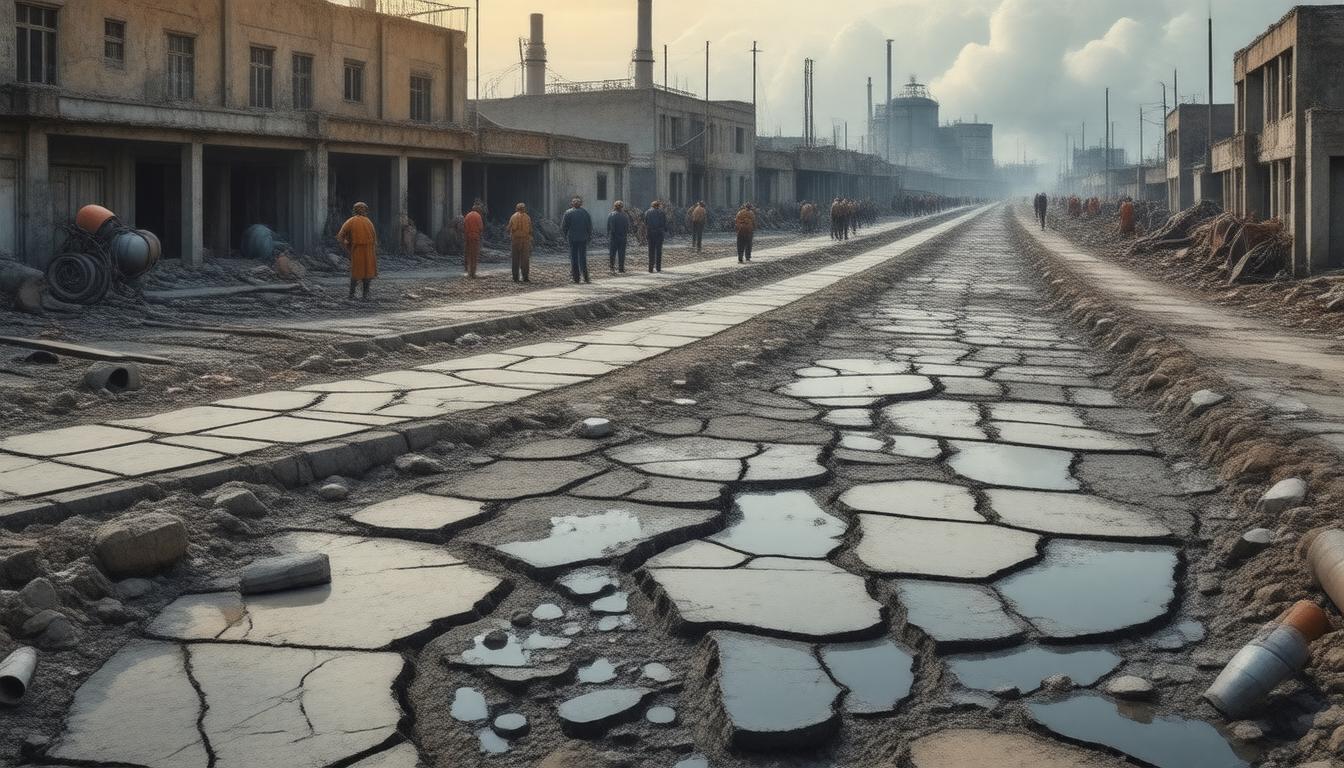

Effective Solutions for Clogged Drain Repair
Clogged drains can be a significant inconvenience, disrupting daily activities and potentially leading to more serious plumbing issues. Understanding the causes and having effective solutions at your disposal are essential for maintaining a smoothly functioning plumbing system. Whether you’re dealing with hair, grease, or foreign objects obstructing your pipes, knowing how to approach clogged drain repair can save you time, money, and frustration.
This comprehensive guide aims to educate you on the common causes of clogged drains, practical DIY methods for unclogging them, and when it’s time to call in a professional. By following these tips and techniques, you can efficiently address and prevent future clogs, ensuring your plumbing system stays in top condition.
Let’s dive into the world of clogged drain repair, addressing everything from basic preventive measures to advanced professional solutions. Enhance your plumbing knowledge and skills to tackle those pesky clogs with confidence and ease.
Understanding the Common Causes of Clogged Drains
Explanation of Typical Reasons Why Drains Become Clogged
Being aware of why drains tend to become clogged can significantly aid in their maintenance and repair. The most common culprits include:
- Hair: Hair is a frequent offender in bathroom drains. As hair accumulates over time, it can create a dense blockage that restricts water flow.
- Grease: In kitchen sinks, grease and oily residues from cooking can solidify within the pipes, leading to formidable blockages.
- Foreign Objects: Small items—ranging from soap fragments to food scraps—can accidentally enter the drains and cause obstruction.
- Soap Scum: The use of soap, especially in large quantities, leads to a buildup known as soap scum, which narrows pipes and restricts water flow.
- Mineral Buildup: In areas with hard water, minerals can accumulate and form deposits, slowly clogging the pipes over time.
- Toiletries: Items such as baby wipes, cotton swabs, and sanitary products are not meant for flush and can cause serious blockages when disposed of improperly.
Insight into How Identifying the Cause Can Streamline the Clogged Drain Repair Process
Pinpointing the exact cause of a clog is imperative to efficiently addressing the issue. Understanding the nature of the blockage helps in selecting the most appropriate method for clogged drain repair. For instance:
- If hair is the problem, using a specialized hair clog remo
- Grease blockages often respond better to enzymatic drain cleaners or hot water flushing.
- Foreign objects might require physical extraction using tools like plumbing snakes.
By identifying the underlying cause, you can use targeted interventions, thereby saving time, effort, and potentially reducing further complications.
Tips for Preventing Drain Clogs in the Future
Prevention is always better than cure. Here are some practical tips to minimize the likelihood of clogged drains:
- Use Drain Covers: Installing drain covers can catch hair, food particles, and other debris, preventing them from entering your pipes.
- Dispose Grease Properly: Avoid pouring grease down the drain. Instead, collect it in a disposable container and throw it in the trash.
- Be Mindful of What You Flush: Only flush toilet paper and human waste. Anything else should go in the trash can.
- Regular Maintenance: Periodically pour boiling water down your kitchen sink to dissolve grease and maintain flow. Use a mixture of baking soda and vinegar monthly to keep drains clear.
- Educate Household Members: Ensure everyone in your household knows what can and cannot go down the drain to prevent accidental blockages.
- Routine Inspection: Schedule regular inspections with a professional plumber to catch potential issues before they become severe.
By integrating these habits into your daily routine, you can significantly reduce the risk of encountering troublesome drain clogs, making your clogged drain repair efforts less frequent and more manageable.
DIY Methods for Clogged Drain Repair
Step-by-Step Guide to Using a Plunger for Clogged Drain Repair
One of the most accessible and effective tools for clogged drain repair is the humble plunger. It’s convenient and can often resolve minor blockages with minimal effort. Here’s how to use it:
1. Choose the Right Plunger: Make sure you have the correct plunger for the job. A cup plunger is ideal for sinks, whereas a flange plunger works best for toilets.
2. Create a Tight Seal: Fill the sink or bathtub with enough water to cover the plunger’s cup. Position the plunger over the drain to form a tight seal.
3. Plunge with Steady, Even Pressure: Push down and pull up with steady, even pressure. Repeat this action several times. You should feel the pressure build up, which helps dislodge the clog.
4. Check the Results: After plunging for about 30 seconds to a minute, check if the water drains away. If the water starts flowing smoothly, you’ve successfully unclogged the drain.
If the clog persists, it may be time to try another method or investigate deeper issues.
Instructions on How to Use a Plumbing Snake for Deeper Clogs
Sometimes, a plunger isn’t enough to clear a more stubborn clog. For such situations, a plumbing snake, also known as a drain auger, can be incredibly effective. Here’s a step-by-step guide:
1. Choose an Appropriate Snake: Plumbing snakes come in various sizes. For home use, a hand-operated model will usually suffice.
2. Insert the Snake: Insert the end of the snake into the drain and start unwinding it slowly. Push the snake forward until you feel resistance—this indicates you’ve reached the clog.
3. Break Up the Clog: Rotate the handle of the snake to break up the clog. The auger at the end of the snake should either cut through the obstruction or snag it, allowing you to pull it out.
4. Retrieve the Snake: Once you feel the clog has been cleared, slowly retract the snake while continuing to turn the handle. This helps to pull out any debris trapped on the snake.
5. Flush with Water: Run hot water down the drain to wash away any remaining debris. This ensures the clog is fully cleared and the drain is functioning properly again.
Home Remedies Like Baking Soda and Vinegar That Can Effectively Unclog Drains
If you’re looking for a natural solution to clogged drain repair, household items like baking soda and vinegar can do wonders. These non-toxic ingredients can break down organic material and clear your drains without the need for harsh chemicals. Follow these steps:
1. Pour Baking Soda: Start by pouring about half a cup of baking soda directly into the clogged drain. Baking soda’s abrasive properties help to loosen up grime and debris.
2. Add Vinegar: Quickly follow the baking soda with half a cup of white vinegar. The chemical reaction between baking soda and vinegar will cause fizzing that can break apart clogs.
3. Cover the Drain: Place a plug or cover over the drain to keep the fizzing reaction working down in the drain for about 15 minutes.
4. Flush with Hot Water: After 15 minutes, pour boiling water down the drain to wash away any loosened debris. This should help clear the blockage and restore proper drainage.
If the clog remains, consider repeating the process or using it in conjunction with a plunger or plumbing snake.
Additional Tips for Effective DIY Clogged Drain Repair
While the techniques mentioned above are generally effective, here are some additional tips to maximize your drain-clearing efforts:
1. Prevention is Key: Regularly clean your drains by running hot water through them or using a monthly baking soda and vinegar treatment to keep clogs at bay.
2. Avoid Chemical Drain Cleaners: Over-the-counter chemical solutions can be harsh on your pipes, causing long-term damage. Opt for mechanical or natural solutions whenever possible.
3. Invest in Drain Screens: Using drain screens can help catch hair and other debris before they enter your pipes, significantly reducing the chances of a clog.
4. Know When to Call a Professional: If you’ve tried all DIY methods and the clog persists, it may be time to call a professional plumber. Persistent clogs may indicate more serious underlying issues that require expert attention.
By following these steps and tips, you can achieve effective clogged drain repair and maintain a smoothly running plumbing system. Regular maintenance and prompt attention to minor blockages can save you from more severe plumbing issues in the long run.
When to Call a Professional for Clogged Drain Repair
Signs That Indicate a Drain Clog Requires Professional Intervention
While tackling a clogged drain can often be managed with DIY methods, there are instances when professional assistance becomes necessary. Identifying the signs early can save you both time and money, and prevent further damage to your plumbing system. Here are some key indicators that it’s time to call a professional for clogged drain repair:
- Persistent Clogs: If you’ve tried multiple DIY methods but the clog keeps returning, it could indicate a deeper issue that requires professional tools and expertise.
- Slow Draining: If your sinks, tubs, or toilets are consistently slow to drain, this might signify a more severe blockage in the main sewer line that a professional plumber needs to address.
- Multiple Clogged Drains: When more than one drain in your home is clogged simultaneously, this often points to a problem in the main sewer line. Professionals can diagnose and repair this more complex issue.
- Unpleasant Odors: Foul smells emanating from your drains are a red flag that organic material is decomposing within your pipes, necessitating professional cleaning and repair.
- Water Backup: Experiencing water backup in unexpected areas, like your shower or sink, when using appliances like the washing machine is a serious issue that should be evaluated by a professional plumber immediately.
- Visible Pipe Damage: If you notice leaks, rust, or other visible damage to your pipes, it’s better to consult a professional to assess the extent of repair needed.
Overview of Professional Methods and Tools Used in Clogged Drain Repair
Professional plumbers employ a range of advanced methods and tools to tackle stubborn and severe clogs. Understanding these techniques can give you peace of mind and appreciation for the expertise and technology involved in clogged drain repair:
- Hydro Jetting: This method uses high-pressure water streams to thoroughly clean and unclog drains. It’s particularly effective for clearing out grease, sludge, and other stubborn debris.
- Video Camera Inspection: A small, waterproof camera is inserted into the pipes to visually inspect the source and extent of the clog. This technology allows plumbers to pinpoint the exact location of the problem and devise the most effective solution.
- Drain Snakes and Augers: While similar to household snakes, professional-grade drain augers are more powerful and can reach further into the plumbing system to tackle deep and difficult-to-remove blockages.
- Rooter Services: Tree roots often invade sewer lines, causing severe blockages. Rooter machines with specialized blades can cut through these roots and clear the pipes effectively.
- Biological Drain Cleaners: Professionals may use enzyme-based cleaners that are safe for pipes and the environment. These cleaners break down organic material without the harmful effects of harsh chemical drain cleaners.
- Trenchless Sewer Repair: For severe cases affecting the main sewer line, trenchless methods such as pipe bursting or pipe lining can repair the damage without extensive excavation, reducing mess and recovery time.
Benefits of Hiring a Professional Plumber for Persistent or Severe Clogs
Hiring a professional plumber offers several advantages, especially when dealing with persistent or severe clogs. Here’s why it’s often worth the investment:
- Expert Diagnosis: Plumbers have the experience and tools to accurately diagnose the problem. This ensures that the right solution is applied, which can save you time and avoid unnecessary costs.
- Comprehensive Solutions: Professionals provide thorough solutions that tackle the root cause of the clog, rather than just offering temporary relief. This helps prevent future problems and maintains the health of your plumbing system.
- Safety: Handling plumbing issues without proper knowledge can be risky and cause further damage. Professional plumbers are trained to perform repairs safely and efficiently.
- Access to Advanced Tools: Professionals utilize high-quality, specialized equipment that is often not available to the average homeowner. These tools allow for more effective and faster repairs.
- Long-Term Savings: While hiring a plumber might seem expensive upfront, it can save you money in the long run by preventing serious damage that could result in costly repairs or replacements.
- Peace of Mind: Knowing that a certified professional is handling your drain issues provides peace of mind. You can be confident that the problem will be resolved correctly and efficiently.
In conclusion, understanding when to call a professional for clogged drain repair is crucial for maintaining a functional and efficient plumbing system. By recognizing the signs of serious clogs and utilizing professional expertise and tools, you can ensure long-lasting solutions and prevent recurring issues. Investing in professional clogged drain repair not only safeguards your home but also offers you the comfort and security of a job well done.
Conclusion
Dealing with clogged drains can be a hassle, but with the right knowledge and techniques, effective clogged drain repair is entirely achievable. Understanding the common causes of clogged drains can help you prevent them from occurring in the first place. Simple DIY methods, such as using a plunger, a plumbing snake, or natural remedies like baking soda and vinegar, can often resolve minor clogs safely and efficiently.
However, it’s crucial to recognize when a clog requires professional help. Persistent or severe blockages are best handled by experienced plumbers who have access to specialized tools and expertise, ensuring a comprehensive solution to the issue. By balancing DIY efforts with professional assistance when necessary, you can maintain a smoothly functioning plumbing system and reduce the likelihood of future clogs.
Incorporating these strategies into your maintenance routine not only saves time and costs associated with frequent repairs but also contributes to a healthier home environment. Whether you choose to tackle the problem yourself or call in the experts, the key to effective clogged drain repair is prompt and informed action.









